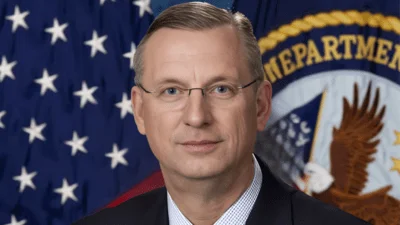On June 9th, 2021, Kenyan President Uhuru Kenyatta presided over a public ceremony, sponsored by the United States, Japan, and Kenya, to destroy 5,144 excess small arms and light weapons (SA/LW) formerly held by the National Police. President Kenyatta praised the symbolic moment to “retire from circulation obsolete state-owned small arms and light weapons that are now redundant to our nation’s defenses and security." Kenyatta also noted that Kenya’s efforts to responsibly dispose of its excess and obsolete munitions stockpiles aligns with the African Union’s call for Silencing the Guns in Africa.
President Kenyatta’s remarks underscore a common interest between Kenya and the United States: Keeping SA/LW out of the hands of terrorists, transnational criminal organizations, and other destabilizing actors who fuel violence and threaten civilians. Toward this end, the U.S. Conventional Weapons Destruction program helps partner governments better secure and manage their national munitions stockpiles while destroying excess and obsolete weapons.
In 2004, Kenya joined other countries in the Great Lakes region to establish the Nairobi Protocol to reduce illicit SA/LW proliferation. Soon afterwards, Kenya, Rwanda, Tanzania, and Uganda created the Regional Centre on Small Arms in the Great Lakes Region, the Horn of Africa, and Bordering States (RECSA) to help implement the protocol. Since 2006, the United States has invested more than $6.8 million to support RESCA’s efforts to improve weapons and ammunition security in the Great Lakes region.
Since 2016, this partnership has helped Kenya to destroy more than 23,000 excess SA/LW while providing five mobile armories to keep Kenya’s remaining weapons stockpiles safe from illicit cross-border proliferation in Somalia. Across the Great Lakes Region, the United States and RECSA have constructed numerous munitions storage facilities, provided more than 1,500 weapons lockers, and destroyed hundreds of tons of excess ammunition.
Beyond providing weapons storage infrastructure and destroying excess munitions, the Conventional Weapons Destruction program also builds partner nation capacity to ensure national munitions stockpiles can remain safe and secure independent of sustained U.S. assistance. The U.S.-RECSA partnership has trained a total of 215 Kenyan security force personnel in international stockpile management best practices since the beginning of the program. In December 2020, 48 Kenyan participants received U.S.-RECSA training to strengthen stockpile management and accountability in border areas, where munitions security is particularly important.
Today, the United States continues to work with key partners such as the Government of Kenya and RECSA to stem illicit SA/LW proliferation in Africa and around the world. The United States remains the world’s largest international donor to CWD, providing more than $4 billion to support humanitarian mine action, physical security and stockpile management and associated activities in over 100 countries since 1993.
For more information on how the State Department is strengthening human security, facilitating economic development, and fostering stability through demining, risk education, and other conventional weapons destruction activities, check out our annual report, To Walk the Earth in Safety, and follow us on Twitter @StateDeptPM.
About the Author: William Gifford is a Frasure-Kruzel-Drew Memorial Fellow in the Bureau of Political-Military Affairs, Office of Weapons Removal and Abatement at the U.S. Department of State.
Source: U.S. Department of State, Bureau of Political-Military Affairs








